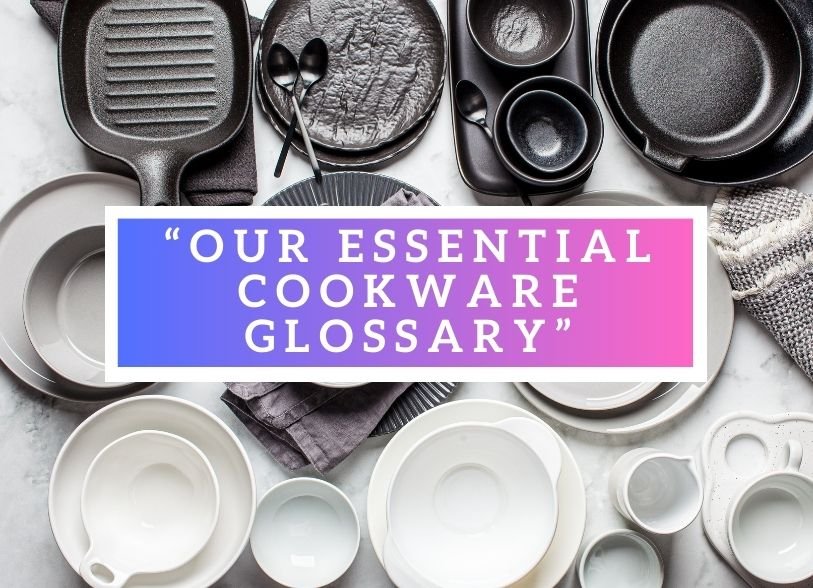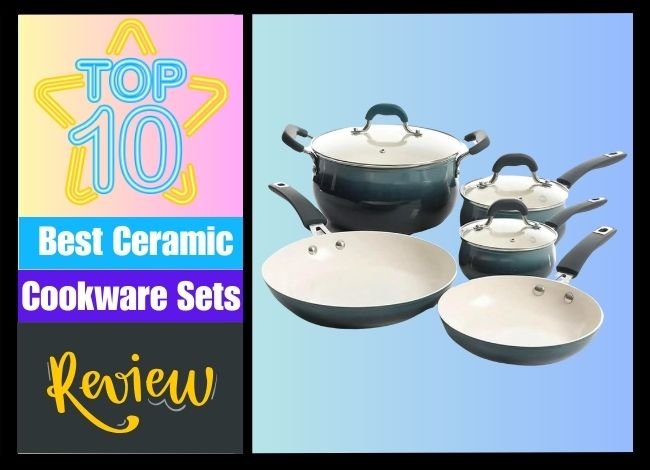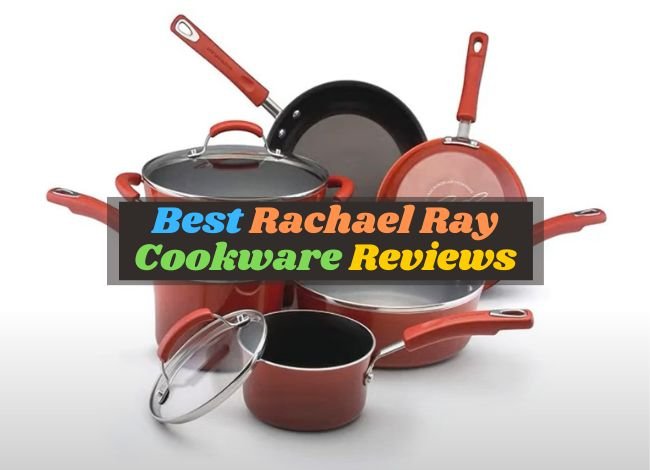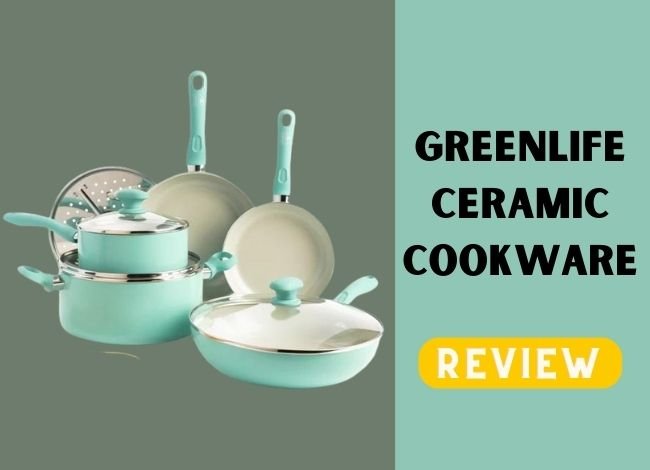Last Updated on February 9, 2024
Embarking on a culinary journey brings the excitement of experimenting with flavors, techniques, and, importantly, cookware. Whether you’re a seasoned chef or a beginner in the kitchen, understanding the diverse world of pans, skillets, and Dutch ovens is fundamental to mastering the art of cooking. Our essential cookware glossary is designed to demystify the vast array of cooking tools, ensuring you know exactly what piece of equipment to use for each culinary task. From sautéing and frying to braising and stewing, the right cookware can significantly affect the outcome of your dishes, enhancing flavors, textures, and overall presentation. This guide will navigate through the essential types of cookware, their unique benefits, and their optimal uses in your kitchen adventures.
Whether you’re looking to invest in your first set of pots and pans or aiming to upgrade your existing collection, understanding the nuances of each type of cookware will empower you to make informed decisions. By the end of this glossary, you’ll have a comprehensive overview of the cookware essentials that every kitchen should be equipped with, ensuring you’re well-prepared for any recipe or cooking style.
The Basics
When starting your culinary journey, understanding the basics of cookware is essential. The foundation of a well-equipped kitchen includes a variety of versatile pans and skillets that cater to different cooking methods. A basic set should encompass a nonstick fry pan for effortlessly cooking eggs and pancakes, a cast-iron skillet for searing meats and baking, a straight-sided sauté pan for sautéing vegetables and making sauces, a stockpot for soups and broths, and a Dutch oven for stews and braises.
These pieces are not only fundamental for daily cooking tasks but also serve as the building blocks for exploring more complex recipes. Investing in quality basics ensures durability and better cooking results, providing an enjoyable cooking experience. Additionally, understanding the care and maintenance of each type of cookware will extend its lifespan and maintain its performance, making your investment worthwhile.
Baking Sheets
Baking sheets are indispensable in both savory and sweet kitchen endeavors. A durable baking sheet can handle everything from roasting vegetables and meats to baking cookies and pastries. Look for heavy-duty options that resist warping and ensure even heat distribution, preventing hot spots that can cause uneven cooking.
Nonstick surfaces or silicone baking mats can also enhance the functionality of your baking sheets, making cleanup a breeze and preventing food from sticking. Whether you’re a novice baker or a seasoned chef, having a variety of baking sheet sizes allows for flexibility in cooking portions and accommodating different oven sizes. Remember, the quality of your baking sheets directly affects the outcome of your dishes, so consider them a crucial investment in your culinary arsenal.
Cast-Iron Skillet
A cast-iron skillet is a timeless addition to any kitchen, celebrated for its unparalleled heat retention and versatility. Ideal for searing, frying, baking, and more, this skillet can transition from stovetop to oven with ease. The key to its longevity is proper seasoning and care, which creates a natural, nonstick surface and improves with use.
Although cast iron is durable, it requires maintenance to prevent rust and maintain its seasoning. Avoid washing it with soap and water; instead, clean with a stiff brush and hot water, and then re-oil to protect the surface. With its ability to enhance the flavor of food and its suitability for a wide range of cooking methods, a cast-iron skillet is an essential tool that gets better with age, making it a worthwhile investment for any cook.
Dutch Oven
The Dutch oven, known for its heavy-duty construction and tight-fitting lid, is a versatile piece of cookware that excels in slow cooking, braising, stewing, baking bread, and much more. Its ability to retain and distribute heat evenly makes it ideal for recipes requiring consistent temperatures over long periods. The Dutch oven suits various kitchen styles and cooking preferences and is available in both enameled and bare cast iron.
Enameled versions require less maintenance and are resistant to acidic foods, while bare cast iron versions improve with use and offer a more traditional cooking experience. Regardless of the type, a Dutch oven is an investment that pays off with its multifunctionality and durability, capable of serving up delicious dishes for decades.
Nonstick Fry Pan
A nonstick fry pan is a kitchen staple, favored for its ease of use and minimal need for cooking fats. Ideal for delicate foods like eggs, fish, and pancakes, it ensures a clean release with little effort. When selecting a nonstick pan, consider one with a durable coating that can withstand the use of metal utensils, although using wooden or silicone utensils can prolong its life. Modern advancements have introduced ceramic coatings as a healthier, environmentally friendly alternative to traditional nonstick surfaces.
Regardless of the coating, avoiding overheating, which can degrade nonstick properties and potentially release harmful fumes, is important. Your nonstick fry pan can provide years of reliable service with proper care, including gentle washing and avoiding abrasive scrubbers.
Roasting Pan
A roasting pan is essential for preparing succulent roasts, poultry, and large cuts of meat. With its high sides and sturdy construction, it’s designed to accommodate hefty items while allowing for air circulation, ensuring even cooking. Many roasting pans have racks that elevate the meat, allowing fat to drip away and promoting a crisp exterior. Look for pans made from materials that conduct heat well, such as stainless steel or aluminum, possibly with a nonstick coating or an enamel finish for easier cleaning. Whether you’re hosting a holiday dinner or cooking a weekend roast, a quality roasting pan is an invaluable tool that can handle your most ambitious culinary projects.
Straight-Sided Sauté Pan
The straight-sided sauté pan is a versatile piece of cookware that bridges the gap between a skillet and a saucepan. Its deep sides and lid make it perfect for sautéing, searing, frying, and even simmering liquids. The straight sides help contain food and liquids, making it easier to stir ingredients without spilling. These pans often come in a variety of materials, including stainless steel, aluminum, and nonstick coatings, each offering different benefits in terms of heat conductivity and ease of cleaning.
A sauté pan with a well-fitting lid can also be used for braising and stewing, providing a moist cooking environment for tender, flavorful results. Investing in a high-quality sauté pan enhances your cooking capabilities, allowing for a wide range of techniques in a single vessel.
Stockpot
A stockpot is an essential tool for any cook, designed for making stock, soups, stews, and boiling pasta or vegetables. Its tall, narrow shape minimizes liquid evaporation, making it ideal for simmering broths and soups over long periods. When choosing a stockpot, consider one made from heavy-duty materials like stainless steel or enameled cast iron, which ensure even heat distribution and prevent scorching. A capacity of 8 to 12 quarts is versatile enough for most home cooking needs, allowing for the preparation of large batches of food that can be stored or frozen for later use. With a good stockpot in your kitchen, you’re well-equipped to tackle a wide range of culinary tasks, from preparing homemade stock to feeding a crowd.
Equipping your kitchen with these essential pieces of cookware will not only make cooking more enjoyable but also enhance the quality of your dishes. Whether you’re a beginner or a seasoned chef, selecting the right tools for your culinary endeavors is a step towards creating delicious, home-cooked meals.
Stock Your Kitchen With These To Take Your Cooking To The Next Level
Transforming your kitchen into a culinary haven doesn’t just elevate your cooking; it invites creativity and passion into every meal you prepare. The cornerstone of any well-equipped kitchen lies in its selection of cookware. Beyond just pots and pans, the right cookware acts as a catalyst for culinary exploration. From simmering soups to crafting the perfect casserole, each piece of cookware you select serves a unique purpose.
In this essential cookware glossary, we delve into the types of pans, skillets, Dutch ovens, and more, ensuring you have everything you need to elevate your kitchen game. Whether you’re a seasoned chef or a budding cook, understanding the role of each item can significantly enhance the quality and variety of dishes you can create. Let’s explore the must-have cookware that will transform your kitchen into a versatile cooking domain.
Casserole Dish
The casserole dish is a quintessential kitchen staple, revered for its versatility and essential role in both cooking and serving. This deep, large, and often rectangular dish is designed to withstand the oven’s heat, making it perfect for baking a wide array of dishes, from lasagnas and gratins to bread and desserts. Its substantial size and depth allow for preparing meals that can feed a family or guests, with the added convenience of serving directly from the oven to the table.
The casserole dish’s ability to evenly distribute heat ensures that your baked creations are cooked thoroughly, with flavors that meld beautifully over time. By investing in a high-quality casserole dish, you not only enhance your ability to prepare a multitude of recipes but also add an element of elegance to your presentation. The journey to mastering the art of casserole cooking begins with understanding the dish’s material options—ceramic, glass, and cast iron being among the most popular—each offering unique benefits for different types of recipes. A well-chosen casserole dish becomes more than just cookware; it becomes a vessel for comfort food, shared memories, and culinary exploration.
Grill Pan
The grill pan is an indispensable tool for those seeking the charred and smoky flavors of grilling without the necessity of an outdoor grill. Its distinctive design, characterized by raised ridges across the bottom, imparts the classic grill marks on food, enhancing both its appearance and taste. The grill pan’s ability to simulate outdoor grilling indoors makes it a year-round asset for cooking meats, vegetables, and even fruits. Constructed from materials such as cast iron or non-stick coatings, grill pans offer excellent heat retention and distribution, ensuring your food is cooked evenly and thoroughly.
The nuances of using a grill pan lie in mastering the heat settings and understanding the pan’s maintenance, especially if opting for cast iron, which requires seasoning to maintain its non-stick properties and prevent rust. Exploring the culinary possibilities with a grill pan not only broadens your cooking repertoire but also brings the delightful essence of grilled food into your kitchen, regardless of the season.
Pizza Stone
The pizza stone is an essential tool for aficionados of authentic, pizzeria-quality pizza at home. Made from ceramic, clay, or cordierite, this sturdy cooking surface is engineered to withstand high oven temperatures while distributing heat evenly across its surface. The pizza stone’s magic lies in its porous nature, which absorbs moisture from the dough, resulting in a perfectly crispy crust every time.
Beyond pizzas, it’s versatile enough for baking bread, pastries, and other dough-based treats, making it a valuable addition to any baker’s kitchen arsenal. Proper care is crucial to maximizing the lifespan and performance of your pizza stone—avoiding soap and soaking, gradually heating and cooling to prevent thermal shock, and seasoning it to create a non-stick surface. Embracing the pizza stone in your cooking routine not only elevates your homemade pizzas but also invites a world of crispy, golden-brown baked goods.
Saucepan
Often underestimated, the saucepan is a powerhouse of versatility in the kitchen. Ideal for sauces, as its name suggests, this pan is also perfect for cooking grains, simmering soups, and boiling vegetables. Its design—typically featuring tall, straight sides and a long handle—makes it conducive to even heat distribution, particularly important for delicate sauces and custards that require constant temperature control.
Choosing the right saucepan involves considering size, material (stainless steel, non-stick, or copper), and whether it comes with a lid, which is essential for simmering and boiling. The secret to unlocking your saucepan’s full potential lies in understanding the nuances of the dishes it can create. A well-chosen saucepan not only becomes a daily go-to in your culinary endeavors but also empowers you to explore a myriad.
For the Martha-Level Home Cook
For those who aspire to the culinary expertise of Martha Stewart, curating a collection of essential cookware is a pivotal step. A well-equipped kitchen is the foundation of gourmet cooking, allowing you to explore a range of recipes and cooking techniques effortlessly. From simmering to sautéing, baking to braising, each piece of cookware in your arsenal plays a critical role. Quality matters as much as variety; investing in durable, versatile pieces can transform your cooking from good to great.
Embrace materials like cast iron for skillets, stainless steel for sauciers, and ceramic or enameled cast iron for Dutch ovens. Each material has unique properties that affect heat distribution, retention, and the overall flavor of your dishes. Additionally, understanding the specific uses of each type of pan, skillet, and Dutch oven will not only enhance your cooking skills but also ensure that every meal is a masterpiece. This guide aims to demystify the vast array of cookware available, making it easier for you to select the perfect pieces for your kitchen.
Braiser
A braiser is an indispensable cookware piece for the home cook aiming to perfect the art of slow-cooked, tender dishes. Unlike a traditional Dutch oven, a braiser has a wider base and lower sides, making it ideal for both searing meats at high temperatures and then cooking them slowly in a flavorful liquid. This dual functionality creates rich, layered flavors that are the hallmark of dishes like coq au vin, beef bourguignon, and ratatouille.
The braiser’s design facilitates even heat distribution, ensuring that meats and vegetables are cooked thoroughly without burning. Its enameled cast iron construction enhances heat retention and allows it to transition from stovetop to oven seamlessly. For the home cook looking to expand their culinary repertoire, investing in a high-quality braiser is a step towards mastering a wide range of comforting and sophisticated dishes. Moreover, the braiser’s aesthetically pleasing design often doubles as a serving dish, making it a stylish addition to any dinner table.
Crêpe Pan
The crêpe pan is a specialized tool that any gourmet kitchen should have, especially for those who delight in preparing breakfasts, desserts, or sophisticated wraps. Its shallow rim and smooth, non-stick surface are specifically designed for the easy flipping and folding of crêpes, ensuring they come out thin and delicate every time. Unlike regular skillets, crêpe pans distribute heat evenly across the surface, preventing hot spots and ensuring a perfectly cooked crêpe with a slightly crisp edge and soft center.
Whether you’re whipping up a sweet treat filled with fruit and chocolate or a savory concoction with cheese and ham, the right crêpe pan can elevate your dish. Moreover, crêpe pans are not limited to just crêpes; they’re versatile enough for making eggs, pancakes, and other light fare. For the home cook aiming to impress with both skill and presentation, mastering the use of a crêpe pan is a game-changer.
Griddle
A griddle is a must-have for those who love to host brunches or enjoy family breakfasts. Its broad, flat surface offers ample space for cooking multiple items at once, from pancakes and eggs to bacon and toast. Unlike a skillet, a griddle provides uniform heat across a larger area, making it perfect for prematurely achieving that golden-brown finish without flipping food.
Electric griddles offer the convenience of precise temperature control, while stovetop models can be used over two burners for greater versatility. A griddle’s efficiency in cooking large batches of food quickly and evenly makes it an invaluable tool for entertaining or feeding a crowd. Additionally, many griddles are designed with a slight slope and a drainage system to remove excess fat, promoting healthier cooking practices. The griddle is an essential kitchen upgrade for the home cook looking to streamline their breakfast routine while still serving up delicious, café-quality dishes.
Paella Pan
A paella pan, or “paellera,” is specifically designed to prepare its namesake dish, offering a unique cooking experience that no other pan can replicate. Its wide, shallow design and slightly sloping sides encourage the perfect evaporation rate, which is crucial for achieving the socarrat—the coveted, crispy rice layer at the bottom of a traditional paella.
The pan’s construction, typically carbon steel, conducts heat evenly, ensuring that rice cooks uniformly without stirring. This characteristic is essential for preserving the integrity of the grains and allowing them to absorb the rich flavors of the broth, saffron, seafood, meats, and vegetables. Beyond paella, this versatile pan can be used for a variety of other dishes, from simmering stews to roasting meats and vegetables. For enthusiasts of Spanish cuisine or any home cook looking to diversify their culinary skills, the paella pan is a testament to the importance of using the right tool for the job.
Saucier
A saucier is a refined addition to any kitchen, designed for the expert preparation of sauces, custards, risottos, and creamy dishes. Its rounded bottom and wider mouth differentiate it from a traditional saucepan, allowing for more efficient stirring and whisking. This design prevents ingredients from sticking and burning, ensuring smooth, lump-free sauces. The saucier’s sloped sides also facilitate easy pouring, reducing spills and drips.
Typically made from stainless steel or copper with a stainless steel lining, sauciers conduct heat evenly, offering superior temperature control. This precise heat management is crucial for delicate tasks like tempering chocolate or making hollandaise sauce. For the home cook who prides themselves on their sauce-making skills or anyone looking to elevate their culinary creations with perfectly prepared accompaniments, the saucier is an essential tool that combines functionality with finesse.
Tagine
The tagine, a traditional North African cookware, is both a cooking vessel and a serving dish, known for its distinctive conical lid. This design is not merely aesthetic; it plays a crucial role in the cooking process. As food simmers, steam rises and condenses on the lid’s interior, then drips back onto the dish, ensuring that the food remains moist and tender while infusing it with spices and aromatics. Tagines are ideal for making stews, braised dishes, and Moroccan specialties, allowing flavors to develop and deepen over low heat.
The slow-cooking method typical of tagine recipes is perfect for tenderizing meat and melding complex spice profiles. Whether made from clay, which offers a traditional, earthy flavor, or enameled cast iron for better heat retention and versatility, a tagine is a testament to the beauty of slow cooking. Incorporating a tagine into your kitchen repertoire invites a world of culinary exploration, making it a must-have for adventurous cooks and lovers of global cuisine.
Conclusion
In conclusion, our journey through the essential cookware glossary underscores the importance of having the right tools in your culinary arsenal. From versatile skillets to indispensable Dutch ovens, each piece of cookware plays a pivotal role in the success of your cooking endeavors. As we’ve explored, selecting the appropriate pan, skillet, or Dutch oven is not just about the material or brand; it’s about understanding the specific requirements of the dishes you love to prepare and how different cookware can enhance or diminish the cooking process. Investing in quality cookware is investing in your culinary future, enabling you to explore a wider range of recipes and techniques confidently.
Remember, the best kitchen is one that’s well-equipped with the tools that suit your cooking style and needs. We hope this glossary serves as a valuable resource in building or refining your cookware collection, ensuring that you’re ready to face any cooking challenge that comes your way. Happy cooking, and may your kitchen endeavors be fruitful and filled with delicious discoveries!




